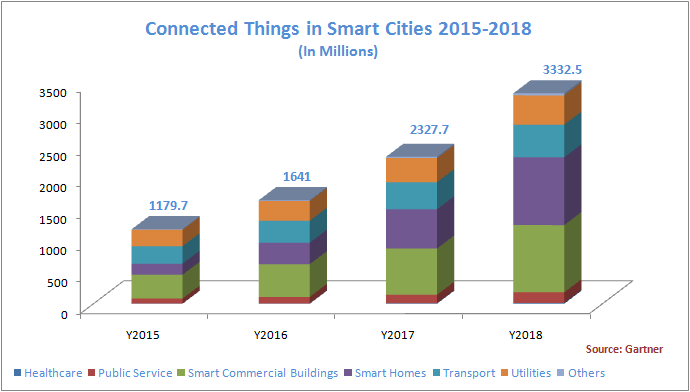
Smart cities will account for every one out of four connected thing deployment in 2016. According to a new research release by Gartner, smart cities will account for 1.6 billion connected things in the year 2016, which will more than double in the next two years to 3.3 billion units. Gartner, in a November release, had forecast that there would be 6.4 billion connected things globally in the year 2016. (20.8 Billion Connected Things By 2020: Gartner)
While smart commercial buildings will account for the highest share (more than 30 percent) of total connected things in 2016, smart homes will overtake them as the biggest user of connected things in the next two years, says Gartner. Each of these categories will use more than a billion units of connected things by 2018. In other words, smart homes deployment will see a six-fold rise between 2015 and 2018.

“Homes will move from being interconnected to information- and smart-enabled — an integrated services environment that will provide value to the home and the individual ambience,” said Bettina Tratz-Ryan, research vice president at Gartner. In smart homes, the consumer IoT applications that are fuelling growth are smart TVs, smart set-top boxes, smart bulbs and various home automation tools such as smart thermostats, home security systems and kitchen appliances.
Commercial real estate benefits greatly from IoT implementation. IoT creates a unified view of facilities management as well as advanced service operations through the collection of data and insights from a multitude of sensors. "Especially in large sites, such as industrial zones, office parks, shopping malls, airports or seaports, IoT can help reduce the cost of energy, spatial management and building maintenance by up to 30 percent,” said Tratz-Ryan.
Transport and Utilities will be the other major users of connected things in a smart city, accounting for half a billion units of connected things each by both these sectors.
"Thanks to data collected from sensors, smart cities can interact and engage with residents and businesses, creating a collaborative environment," said Tratz-Ryan.

 In
In
Add new comment